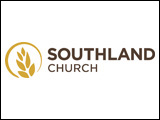The Saskatchewan Ministry of Agriculture expects consumer demand for pork, particularly on the export market, to be the key factor influencing live hog prices in the coming months.
Cash hog prices in western Canada have declined by about three percent over the last few weeks while nearby lean hog futures prices for the June to August contracts have fallen close to 10 per cent over the past month.
Brad Marceniuk, a livestock economist with the Saskatchewan Ministry of Agriculture, says an overall reduction in the North American hog supply has helped hog prices but demand has been the bigger driver over the past few months than supply.
Pork cutout values really drive hog carcass prices and U.S. pork cutout values had peaked at around 96 dollars per hundredweight in mid-April before declining about five per cent over the last few weeks.
A combination of concerns over weaker domestic pork demand from higher retail pork prices and some slow down in export demand has pulled cash hog prices and lean hog futures hog prices back from their highs earlier on.
Hog prices are expected to be steady to upward into the summer but prices probably won’t be as high as anticipated a few weeks ago.
Based on lean hog futures prices, Index 100 hog prices for western Canada will probably average about 160 dollars per 100 kilograms over the next few months.
With North American pork production not expected to change significantly over the next few months, demand for pork will be a bigger factor than supply of pork in determining hog prices in the next few months.
Pork demand, particularly export demand, will be key in increasing hog prices into the summer.
Also the supply and demand for competing meats, particularly chicken, will be important in affecting pork prices in the coming months.
Marceniuk says, with hog prices trending upward in the first part of 2011, most western Canadian hog producers were back to profitable levels in April and should be profitable over the next few months but feed prices will be key.
He notes western Canadian barley prices have not increased to the same level as U.S. corn prices which has given western Canadian hog producers a noticeable feed cost advantage over U.S. producers.
Source: Farmscape.Ca



